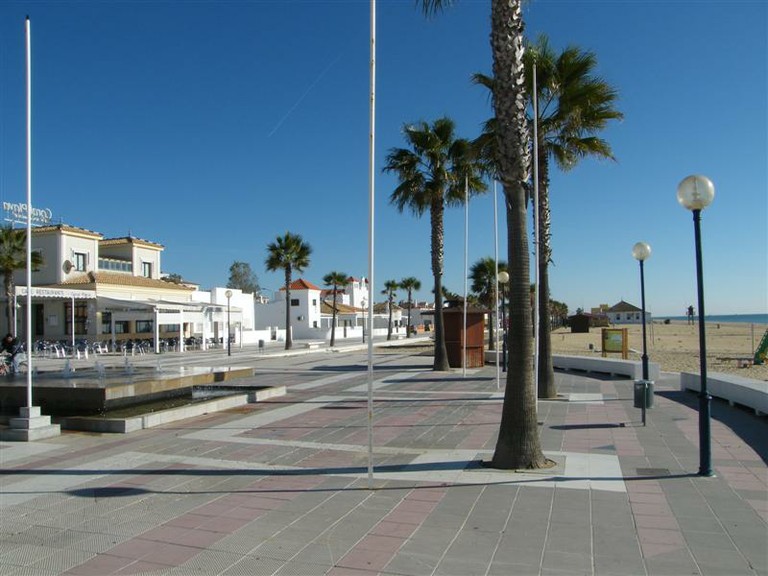Lepe

Village belonging to the area is part of the Marismas del Río Piedras y Flecha del Rompido Natural Beauty Spot. It also has the splendid beach of La Antilla, one of the most beautiful in the province.
It is known around the world for the character and idiosyncracies of its people who have converted humour into an identifying factor. It has known, however, how to build a parallel reputation and a buoyant economic situation through the growing of strawberries. It is the main producer and exporter of this exquisite fruit of the whole country.
It has monuments such as the Parish Church of Santo Domingo de Guzmán and Saint Christopher's Chapel. A few kilometres away is the Port of Terrón, one of the most important fishing villages in the province.
History
Town founded by the Phoenicians.
In Roman times it received the name Laepa.
During the Al-Andalus period it belonged to the area of Niebla.
The Christian conquest was carried out in the XIII century by the Templars in collaboration with the Portuguese. In the XIV century it was donated to the knight Templars and in the XV century it passed into the hands of the Marquisate of Ayamonte.
Some of the people related to the Discovery of America such as Juan Diaz de Solis and Rodrigo de Triana were from this town.
Up until the abolition of the estates, in the year 1837, it was linked to the County of Niebla and the Marquisate of Ayamonte.
It participated in the uprising of the Duke of Medina Sidonia and the Marquis of Ayamonte against the Crown.
During the War of Independence it suffered various lootings.
Eminent citizens
Paco Toronjo, flamenco singer.

- Max 16
- Min 14
- Max 60
- Min 57
- °C
- °F


















